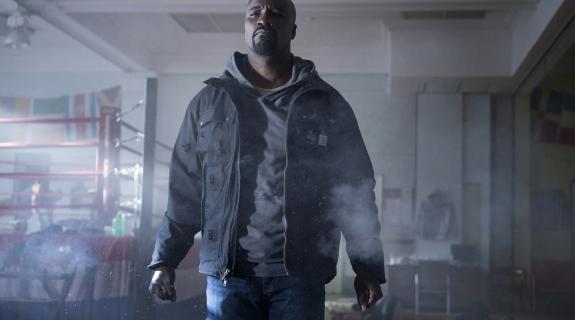It’s not news to say that streaming shows are among the most critically acclaimed on television, and the increasingly crowded trophy cases of Amazon, Hulu and Netflix execs are proving that.
As moderator and actress Janina Gavankar (Mysteries of Laura) said, “streaming shows are the best shows available right now,” during a panel at WonderCon 2016 in Los Angeles.
Much has been made about the evolution of TV, but primarily that comes from executives, showrunners or the actors. “But there are enough panels for us,” Gavankar said.
This WonderCon, we got to look at the creative talent behind the screen, including a diverse group that includes VFX workers, composers, costume designers and production designers with resumes that include Jessica Jones, Daredevil, Bloodline, 11.22.63, Transparent and The Man in the High Castle.
During the “Streaming Success” panel, the group talked about the differences in working on a streaming show than anything else.
“Instead of a two-hour movie, you have a 13-hour movie, and we have a lot of material to get through,” said David Van Dyke of SHADE VFX (Daredevil, Jessica Jones). “The quality needs to be the same, but there’s more to do and it’s running faster. Yet somehow, you get these really beautiful, high levels of work.”
“Streaming work is trying to break through. The difference between the work we have the opportunity to do and traditional network stuff is the much riskier choices are gone after,” said Drew Boughton (production designer, The Man in the High Castle). “The show that I’m on is very risky. Its symbolism and things that we deal with would be very hard to see done in a network context.”
Catherine Smith, the costume designer for Transparent, echoes this sentiment.
“The risks that Jill Soloway gets to take are phenomenal. It shows when it’s successful. When they do well, they do really well.”
It goes down the line: “Creatively, all of these services offer behind-the-scenes people chances to push envelopes in ways we’re not able to do in network TV,” said Roland Sanchez (11.22.63). “Network is trying to catch up with streaming services.”
“There’s a richer kind of storytelling going on. David Tennant didn’t show up until the third or fourth hour of Jessica Jones, but on network it would have had to unfold more quickly,” said Jessica Jones composer Sean Callery. “We get chances to develop themes and musical ideas more slowly over time. Plus on Netflix, there are no commercials, so we have longer scenes and the flow is more dynamic.”
“We’d have arguments about what kind of couch Maura [Pfefferman] would have in her condo. I’ve never had that kind of argument before,” said Smith. “Everything is taken very seriously from the top down; we wanted to be very real. This story is their story. I’ve never felt closer to the art than I do on this show.”
“I pay more attention to when I’m going to repeat a costume. I got to be careful when someone’s bingeing 13 episodes,” said Stephanie Maslansky, costume designer for Netflix’s trio of Marvel series, Daredevil, Jessica Jones and Luke Cage. “I can’t repeat a costume too soon in another episode. It could be a distraction and that’s the last thing you want to do.”
That or cross Marvel, although working the comic-book powerhouse-now studio drew raves from the panelists, with Callery describing his experience.
“I read the first six scripts, and wasn’t allowed to see any footage,” he said. “Marvel has a profound security process. We have to work on computers that aren’t connected to the Internet. They want to protect the experience when you’re watching it.”
“What happens in Marvel, stays in Marvel,” said Gavankar.
The differences might be subtle, but it’s the little details that audiences are responding to. Sanchez contrasted his work on Lost with 11.22.63.
“With 11.22.63 I read the book and knew where it was going to go. Lost was very different. I had no idea where they were going to go.”
He couldn’t plan an arc with the characters’ wardrobe like he has with James Franco and Sarah Gadon’s characters, the latter of whom has developed a lighter palette and freer fashion sense as the show has progressed.
Given the intensity and specificity with which these professionals discussed their craft, it’s clear that all the work they do comes purely from the storytelling standpoint.
“Because it’s such a new thing, and we were in at the beginning of Amazon, we get to do our own thing,” said Smith. “A lot of people doing it, this is their first opportunity to be a voice in this art, they don’t have any of the baggage.”
It’s safe to say the only baggage that comes with these shows are our never-ending watch lists.
[All images courtesy of Netflix]
Tags:













































__twocolumncontent.jpg)











